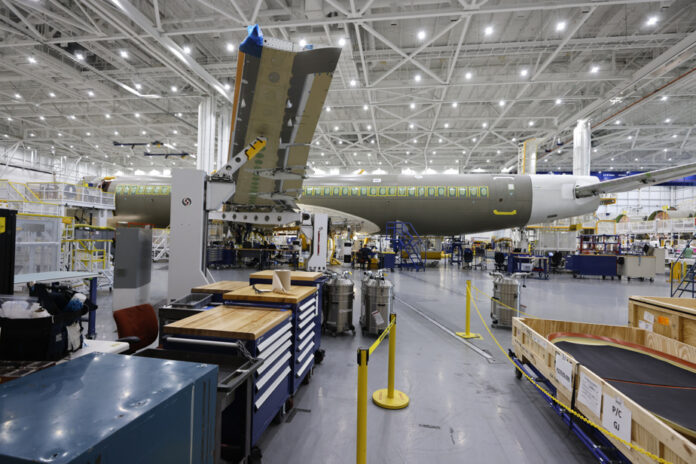The window for the Quebec state to recover its marbles in the Airbus A220 risks narrowing. One of the plane’s main suppliers, Spirit Aerosystems, estimates that it will take longer – beyond 2025 – to start making money from the program because its production rate is lagging behind. take flight.
Little publicized, this observation was made by the president and CEO of the American multinational, Thomas Gentile, during a conference for investors earlier in September. The latter even went so far as to ask Airbus and Boeing to absorb part of the costs for programs that are no longer “viable” for Spirit. The A220 is one of them.
“Originally, we said in 2025, when they [Airbus] would produce 14 planes per month,” explained Mr. Gentile, when asked about achieving profitability with the A220. These 14 planes per month by 2025 may be a challenge based on our current situation. »
Spirit plays an important role in Bombardier’s ex-C Series supply chain. The company manufactures part of the fuselage, the wings of the plane as well as the pylons of the aircraft, the component that connects the engine to the wing or fuselage.
The A220, A350 and Boeing 787 Dreamliner are undermining the finances of the Kansas-based company. These three programs are at the origin of a charge of US$215 million recorded in the first half of the year due, in particular, to difficulties in obtaining parts and the increase in salaries.
Spirit claims to be discussing these issues with Airbus and Boeing – a way of saying that it would like to renegotiate these agreements with the two aircraft manufacturers.
Airbus says the A220 will come out of the red once 14 planes are rolling out monthly from factories in Mirabel and Mobile, Alabama. The acceleration in the production rate is observed, but it does not seem to meet expectations, according to Mr. Gentile.
“It is disappointing to see that production is much lower than expected. For example, this year the initial projection was 100 units, then it went to 82, then 78. So we’re probably in the 65 to 70 [devices] range today. The targets have dropped significantly. »
By email, Spirit declined to comment further on the A220’s challenges.
As a 25% owner of the A220, Quebec has every interest in seeing profits arrive sooner rather than later. Last year, the Legault government added 380 million to the program to remain a shareholder longer. This increases the money injected into the device developed by Bombardier to 1.7 billion. Airbus will be able to buy back the State’s share towards the end of the decade. The longer the profits are delayed, the more the amount obtained by the Quebec government risks being cut.
In a statement, Airbus Canada’s head of communications, Annabelle Duchesne, said the European aircraft manufacturer’s objective remained “unchanged”. The production rate should reach 14 planes per month “by the middle of the decade,” she says, without specifying the year.
“Certain short-term planning adjustments have been made to our ramp-up in order to protect our supply chain and guarantee deliveries to our already engaged customers,” writes Ms. Duchesne.
Although supply chain disruptions are causing headaches for aircraft manufacturers, Airbus has nevertheless been able to increase its A220 deliveries since the start of the year. As of the end of August – the most recent data available – 37 copies had been delivered to customers. This is seven more devices compared to the same period last year.
“This demonstrates the extent to which aircraft programs depend on the supply chain,” says analyst Richard Aboulafia, managing director of the firm AeroDynamic Advisory. I’ve never seen anything like this in 35 years in the industry. »
In his opinion, there are few means available to Airbus to make up for the accumulated delay. Mr. Aboulafia says there is a “sad observation”: it will take much longer than expected before things get back to normal with suppliers.
WorkforceMore than 12,000 people
FootprintUnited States, United Kingdom, France, Malaysia, Morocco
Main productsFuselages, wings, wing components, pylons, nacelles
Revenue* US$2.8 billion
Loss* US$488 million
(*in the first half of 2023)















